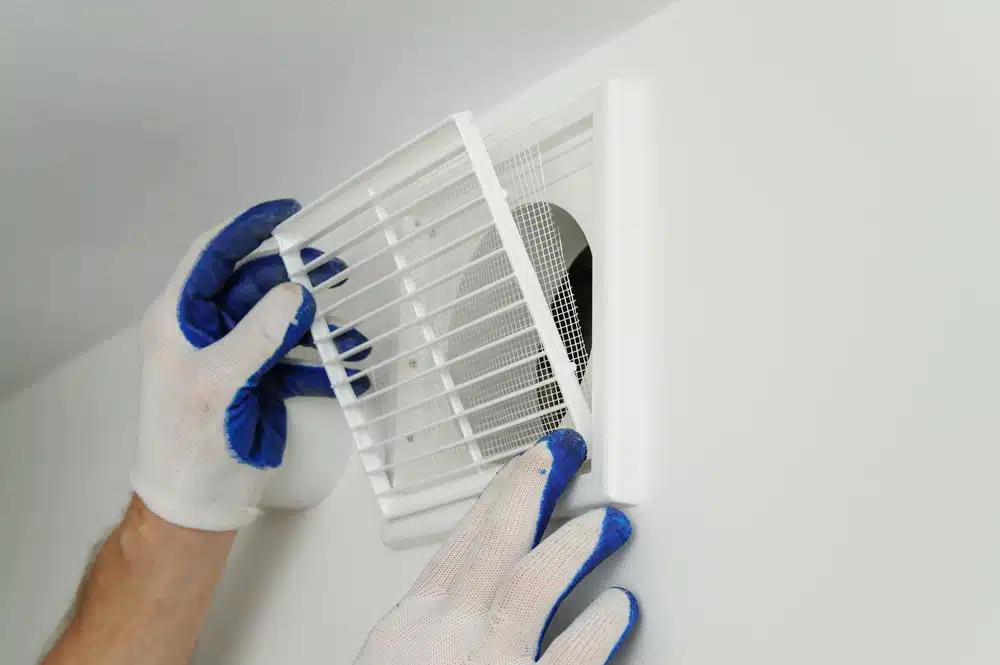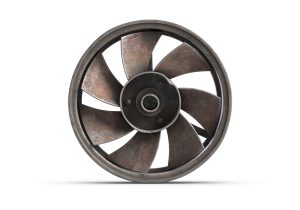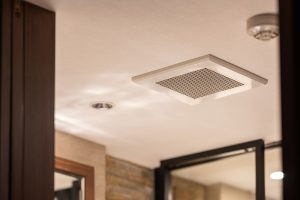How to Install a Kitchen Extractor Fan
Having a kitchen you can be comfortable in, can be the deciding factor on if your house feels like a home to you. At I-Sells, we want to make sure every person has that luxury.
A kitchen you can be comfortable in is one that is free from mould, damp, stale air and odours, and without a kitchen extractor fan that can be almost impossible.
In this blog, we are going to be highlighting how to install a kitchen extractor fan, along with answering some questions we know you may have.
Do I need an extractor fan in my kitchen?

We are regularly asked by our customers “why do you need an extractor fan in the kitchen?”
Kitchens generally accumulate heat on a regular basis for extended periods of time, whether it’s cooking food, boiling the kettle or using hot water. This excess steam if not ventilated will lead to condensation appearing on surfaces, and if left unchecked, can be the perfect environment for mould to grow.
Mould is a fungus known to cause and exasperate an array of health issues, simply wiping it away does not guarantee it is dealt with. Only daily maintenance will keep it at bay, this maintenance comes in the form of opening windows during cooking, in conjunction with using an extractor fan, and the cooker hood, whilst also cleaning any spillages you find.
Mould is a health hazard if left unattended in the kitchen, the microscopic spores can get caught on your food and drink, and can cause mould to grow on any food that’s left out for an extended period of time.
Additionally, as per new building regulations in 2022 (specifically ‘building regulations’ document F) any renovation taking place such as the installation of new ventilation, requires that the new ventilation not be worse than what was being used before, this is in order to reduce energy emissions in every home by mandating any ventilation being updated, must be energy efficient & work to a better standard than what it is replacing, which is the case for the kitchen extractor fans we offer.
Extractor fans work by expelling unwanted humid air and odours through their venting. Extractors ensure that the air in your kitchen is not stale and is not host to any lingering smells, whilst expelling the humidity.
Do you need an extractor fan in your kitchen? Or a new extractor fan? You probably do if any of these signs apply to your kitchen:
- Mould buildup that always returns despite cleaning it away.
- The kitchen remains humid long after cooking takes place.
- There is usually condensation on the window, walls or tiles and other surfaces
- Smells linger for a very long time.
- Mould appears around or under the sink.
- Food left out spoils quicker than it should (like fruit for example)
If any of these signs are apparent in your kitchen, we suggest you immediately use our mould-cleaning products and make a daily habit of opening the window and looking to upgrade or install a kitchen extractor fan. We suggest doing this immediately as prolonged exposure to mould can deteriorate your health.
As we continue, we will be elaborating on the steps needed to install a kitchen extractor fan, if you want to read more about condensation management, and delve into the subject of needing an extractor fan, or knowing where you stand with mould and your landlord, our blog has a comprehensive array of answers to help you.
How to install a kitchen extractor fan
Kitchen ventilation can cause some confusion as we are often asked questions regarding how to fit a kitchen extractor fan such as ‘do kitchen extractor fans need to vent outside?’
The answer is yes, whether it’s a cooker hood or an extractor fan, they both must vent outdoors. Cooker hoods may require longer ducting depending on their placement in the kitchen.
Where to position the extractor fan in your kitchen
Kitchen extractor fans should always be sited in the furthest window or wall from the main source of air replacement to avoid short-circuiting the airflow. This means placing a fan by the kitchen doors (where air would be coming in from) would be pointless.
It should be located as high as possible in the window or wall nearest to smells or steam, but not directly above eye-level grills or cooker hoods.
Now you know the best place to install your extractor fan, you will need:
- Pencil
- Tape measure
- Drill and correct drill bit
- Flexible ducting
- Saw
- Hammer
- Chisel
- Safety equipment
- Screwdriver
- Mask and gloves & goggles
The Process
- Use a pipe and cable detector, make sure there are no obstructions inside or outside the wall that will block the fan. (If there is dampness on the wall you plan to install, check for leakage. Rectify the issue before installing).
- For fitting a fan in a new place, you have to make a hole in your wall. Once you have made sure the wall is clear, hold your fan in place, and use your pencil to trace around the circular edge of the fan. Mark the centre point on the wall and drill a hole through the wall for reference.
- Drill a series of holes around the circular tracing of your fan at around 35mm apart. Once you have done this, use a chisel and hammer to ‘chop out’ the wall within.
- After creating the hole, insert the flexible ducting. It should fit at a slight downward angle whilst being flush against the internal and external walls. Trimmings can be made with the saw. (any repairs to plasterwork should be undertaken now).
- On the inside wall, fit the fan over the hole and use your pencil to mark where it is secured to the wall. Drill the holes to insert any necessary fittings. Position the fan over these holes and secure it in place with your screwdriver.
- Do the same for the outside wall.
- Now it’s time to make the electrical connections, in compliance with ‘Part P’ of UK building regulations, a qualified electrician must make the appropriate connections. If you don’t use a qualified electrician, you can risk damaging the electric circuits in your home, potentially electrically shocking any resident in the home, incurring a criminal fine, and being made to remove the installation.
- After making the electrical connections, secure the grill covers over the fan on the inside of the kitchen and on the outside wall. If the cover has a slatted design, make sure to position them horizontally to keep the rain out. (Resourced from Plumbworld.co.uk)
Maintenance – How to clean a kitchen extractor fan
We have an in-depth blog specifically about cleaning your extractor fan. Read it by clicking here.
Although cooker hoods will significantly improve humidity control in the kitchen, they are much louder and less energy efficient than an extractor fan, so it’s advised to only use a cooker hood whilst cooking.
Extractor fans will facilitate the removal of humid air in the kitchen at a fraction of the cost and sound too. With that being said, we’re happy to share with your our kitchen extractor range.
Kair Smart 100mm Intelligent Extractor Fan with Humidistat Timer & Data Logger
The Kair Smart 100mm Intelligent Extractor Fan with humidistat Timer & Data Logger is one of our best kitchen extractor fans with humidistat, featuring a 5-year warranty on parts included.
It boasts a Humidistat timer which means the fan will turn off itself after the room’s moisture level goes beneath a certain level. Along with smart sensors that constantly analyse the room it’s in.
Depending on your installation option, you can opt to pull a cord on the fan (or use a remote switch) to activate the boost mode, quickly ensuring any humidity or odour is dealt with at a faster rate.
For a full breakdown of information, functions and price click here to see the full list of features and specifications.
Kair Mini Single Room Heat Recovery Ventilator – White Outer Grille -(min 120mm hole diameter)
The Kair Mini Single Room Heat Recovery Ventilator – White outer Grille – (min 120mm hole diameter) offers higher levels of indoor air quality whilst recycling heat that is normally wasted with traditional extractor fans. It adds fresh & filtered air into your home whilst extracting stale, moist air.
Due to the rise in energy bills, this product can help save that little bit more money on your bills whilst also reducing your carbon footprint, It does this through one of its fan operation modes called “ventilation with energy recovery”. To see the full list of features and specifications, head over to our website now.
Contact us

We at I-Sells endeavour to make sure our customers have all the information they need before making the choice to invest in our products. Be sure to visit our blog page to gain knowledge on the wide array of factors and issues surrounding ventilation, mould, condensation, and much more. We hope to have helped you learn how to install a kitchen extractor fan.
We understand you may have more questions, Please do not hesitate to contact us for more information with regard to ventilation in your kitchen. If you’d like to send us an email, click here. For other contact options, see below:
Call us on 020 8463 9696
Visit us at our showroom:
*OPENING TIMES*
Monday – Friday: 8:00am to 17:30pm
Saturday: 9:00am to 12:00pm
Sunday: Closed
15 St John’s Parade
Sidcup,
Kent
DA14 6ES
United Kingdom




























Add comment
You must be logged in to post a comment.